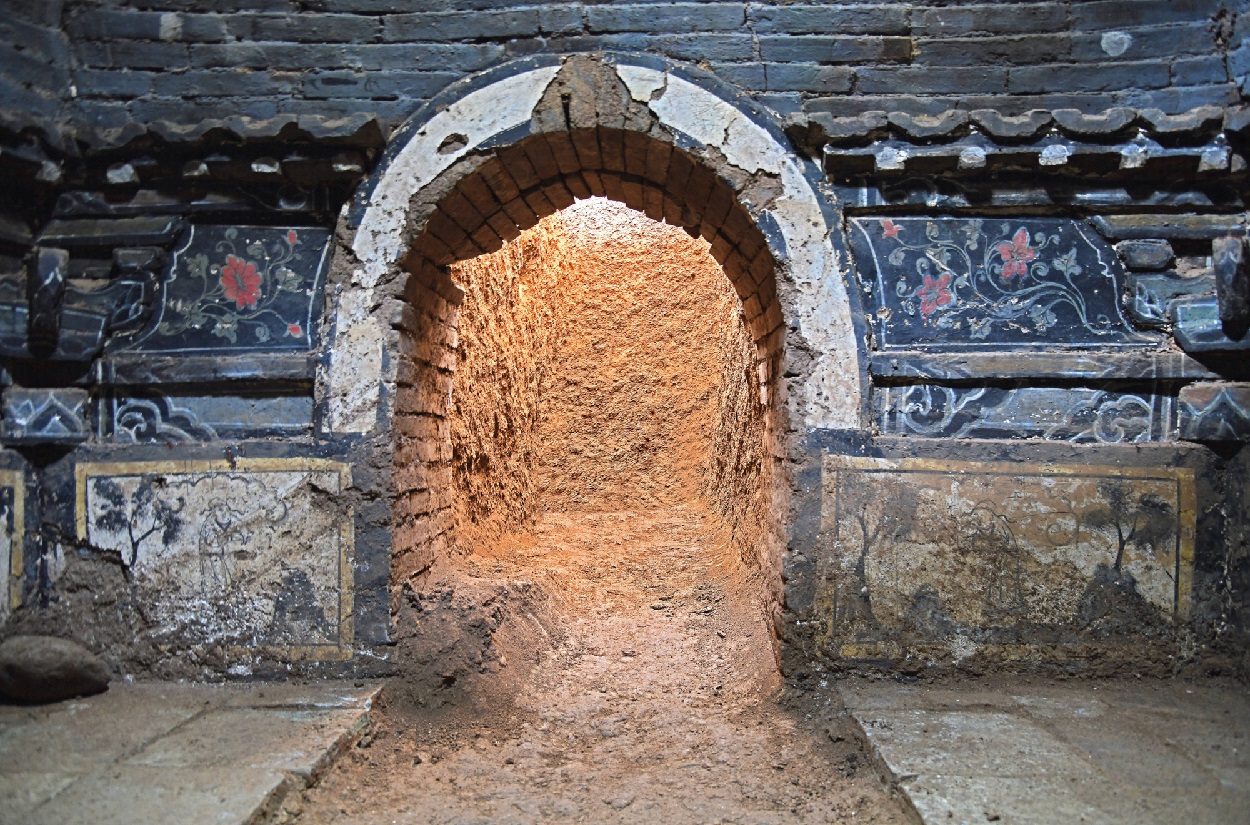Archaeologists from the Shanxi Provincial Institute of Archaeology have unearthed three brick-built tombs during excavations in the city of Changzhi, Shanxi Province, China.
The tombs served as a family cemetery and date from the Ming Dynasty (1368-1644), the last imperial dynasty of China ruled by the Han people.
All three tombs were discovered during a road construction project, revealing two intact tombs, and a third which has partially collapsed.
The two surviving tombs have brick pyramidal roofs and contain a collection of ornately decorated murals that depict scenes of the sun, the moon, and elements from Chinese mythology.

Within the central burial chambers are decorative floral patterns and painted architectural elements to resemble wooden doors, lattice windows, pillars, eaves, and rafters.
The collapsed tomb has only a few surviving murals inside, which archaeologists have removed for preservation in the hope that they can be partially restored.
Excavations inside all three tombs have yielded 18 artefacts, including copper coins, copper mirrors, and ceramics. Additionally, archaeologists discovered traces of an octagonal brick-built structure, which is believed to have held religious significance in connection with the family cemetery.
Zheng Yuan, deputy director of the Shanxi Provincial Institute of Archaeology said: “The discovery of the family tombs has provided important information and materials for the study of funeral rituals during the Ming period in the region, as well as ancient architecture.”
Header Image Credit : Xinhua
Sources : China Services INF





